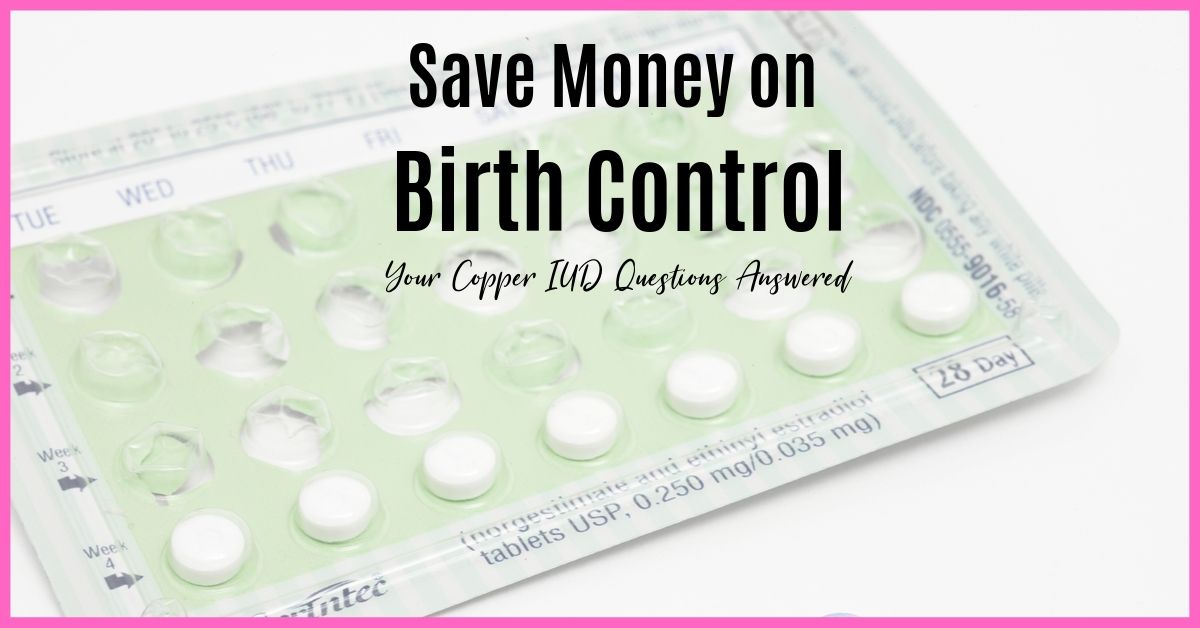Thinking about getting a copper IUD? In this post, I will share about my experience with a copper IUD and you’ll get your copper IUD questions answered!
This post may contain affiliate links which allow this blog to earn money without a cost to you. Many thanks if you use them. Please read my disclosure for more info.
When I was younger, Planned Parenthood was the sole provider of my birth control. I loved that they gave me birth control pills for free. I also loved that they gave me a yearly supply. That meant that I didn’t have to go to the pharmacy every month. However, once I was older and making more money, it didn’t make sense to use Planned Parenthood anymore. But, without them, even with insurance my birth control pills were $10 a month (instead of free). I also had to go to the pharmacy every month to fill my prescription. #aintnobodygottimeforthat
Why Did I Decide to Get a Copper IUD?
There were a few reasons this was important to me. First of all, having an IUD would be less expensive and less time-consuming. More importantly, I met a woman who was into holistic health that had trouble having kids. At the time, my older sister (who had been on birth control pills for years) was also having problems conceiving. Because I knew I wanted kids in the near future, I listened carefully to what the holistic health expert said. She mentioned that she recommended the copper IUD (Paragard) because it was a nonhormonal form of birth control. With a copper IUD, I would still ovulate naturally, the egg just wouldn’t be able to be fertilized. When I was ready to have kids I would simply get the IUD removed. Then, conceiving would most likely be easy because I wouldn’t have to wait for any artificial hormones from birth control pills or a hormonal IUD to leave my system. So, I took her advice and decided to go from being on birth control pills to the copper IUD.
How Much Does a Copper IUD Cost?
The great news is that the copper IUD is fully covered by most insurances. Additionally, it lasts for up to 10 years once it is put in. No more monthly birth control pill costs, and no more monthly trips to the pharmacy!
What’s an IUD Insertion Like?
If you’re thinking about getting an IUD you’re probably wondering what it’s like to get put in. It doesn’t feel good, but it’s not that bad. I did a ton of research and read a ton of forums about getting an IUD put in and it freaked me out! Please don’t do this! It will only make it sound really bad and make it harder to go through with it. Those forum people are drama queens! And my guess is that only the people with bad experiences talk about it while the millions of people with a great experience never talk about it online.
Here’s all you need to know about getting it put in: it’s similar to a pap-smear with maybe five additional seconds of intensity when they actually put it in. To be honest, the most painful part is the cramps you get throughout the day afterward. Take some pain pills, and be ready with a heating pad like this one at home. For me, the cramps went away within about 12 hours.
Protips if You’re Thinking About Getting an IUD
At the appointment before your IUD insertion, ask your doctor to prescribe you something to soften your cervix that you will insert the night before the appointment where you get it put in. That way they have a bigger space to work with when inserting it, thus, less pain for you. Also, you can take pain medicine about 30 minutes before the appointment where you get it put in to help reduce any pain you might have.
Living with an IUD
After the cramps went away from getting it inserted, it was awesome! I didn’t have to remember to take birth control pills, and I didn’t have to fill a prescription every month or pay for my birth control! I did experience periods that were slightly heavier than they were before, but using a menstrual cup (click here to learn more about menstrual cups) helped keep my heavier periods under control.
How is an IUD Taken Out?
I scheduled an appointment with my general doctor for her to remove it. Like a pap smear, they had me lay on the table with my legs open and they inserted a speculum so they could see the stings. They had some long clamp looking things and carefully put those in me and had them clamp down on the strings. Here’s the funny part: they counted to three and then had me cough really hard. They simultaneously pulled while I coughed and it was out. I didn’t even feel it. Easy!
Did Having an IUD Help You Conceive Naturally?
Yes! Once I was ready to have kids I simply got the IUD taken out, and I got pregnant within the first month! It’s possible that I was just lucky, but I believe that not having the hormones from birth control in my system for years really helped me conceive naturally. I was able to track my ovulation while I was on the IUD (because that was my natural cycle), and then once it was taken out I had sex on the days I was fertile.
How Much Money Can a Copper IUD Save?
At its face value, if your insurance covers all of the cost of a copper IUD and you’d have to pay $10 per month for birth control pills then the IUD would save you $1,200 over a ten year period. However, the real money savings come into play if you can avoid having to use any type of infertility treatments if you plan to conceive at another time.
Knowing the cost of fertility treatments, this decision saved me a ton and for that, I will be forever grateful.
I hope you enjoyed getting your copper IUD questions answered. Have more questions for me about getting or having an IUD? Leave them in the comments below and I’ll get back to you.





